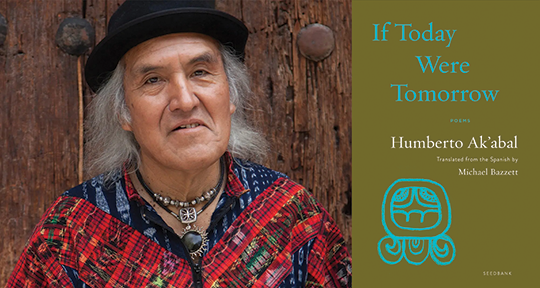If Today Were Tomorrow by Humberto Ak’abal, translated from the K’iche’ and Spanish by Michael Bazzett, Milkweed Press, 2024
To read Humberto Ak’abal is to be transported: first to the Western Highlands of Guatemala, full of mountainous forests and ravines where corn grows amid the mist, and then through the natural world and toward everything it encompasses—the elements, their sounds, and even their language. In a world where the sun eats the mist, butterflies kiss the earth, and peach trees weep, the boundaries of the conscious world expand to envision a new, shared world.
Humberto Ak’abal was a K’iche’ Maya poet from Guatemala. His book Guardián de la caída de agua (Guardian of the Waterfall) was named Book of the Year by the Association of Guatemalan Journalists, and he was awarded the Golden Quetzal award in 1993. A world-renowned Guatemalan poet, Ak’abal oscillated between writing in K’iche’—his mother tongue—and Spanish, the official language of Guatemala. This new collection, published by Milkweed Press in June, spans five sections, each delving into a different facet of the poet’s oeuvre, while always retaining his essence, humor, and care for the natural world.


